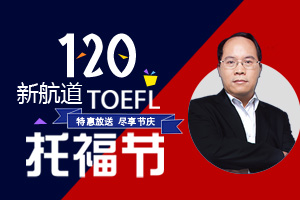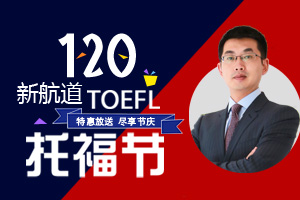托福阅读材料之原子弹之父Robert
2013-12-09 17:26 供稿单位: 新航道
出国英语考试有哪些 雅思6.5是什么水平 雅思阅读评分标准 托福阅读评分标准 雅思和托福的区别
J. Robert Oppenheimer (April 22, 1904 – February 18, 1967) was an American theoretical physicist and professor of physics at the University of California, Berkeley. He is best known for his role as the scientific director of the Manhattan Project, the World War II effort to develop the first nuclear weapons at the secret Los Alamos National Laboratory in New Mexico. For this reason he is remembered as "The Father of the Atomic Bomb". In reference to the Trinity test in New Mexico, where his Los Alamos team first tested the bomb, Oppenheimer famously recalled the Bhagavad Gita: "If the radiance of a thousand suns were to burst at once into the sky, that would be like the splendor of the mighty one." and "Now I am become Death, the destroyer of worlds."
After the war Oppenheimer was a chief advisor to the newly created United States Atomic Energy Commission and used that position to lobby for international control of nuclear power and to avert the nuclear arms race with the Soviet Union. After provoking the ire of many politicians with his outspoken political opinions during the Red Scare, he had his security clearance revoked in a much-publicized and politicized hearing in 1954. Though stripped of his direct political influence Oppenheimer continued to lecture, write, and work in physics. A decade later President John F. Kennedy awarded (and Lyndon B. Johnson presented) Oppenheimer the Enrico Fermi Award as a gesture of political rehabilitation.
Oppenheimer's notable achievements in physics include the Born–Oppenheimer approximation, work on electron–positron theory, the Oppenheimer–Phillips process, and a first prediction of quantum tunneling. With his students he also made important contributions to the modern theory of neutron stars and black holes, as well as work on the theory of quantum mechanics, quantum field theory, and the interactions of cosmic rays.
As a teacher and promoter of science, Oppenheimer is remembered most for being the chief founder of the American school of theoretical physics while at the University of California, Berkeley, contributing significantly to the rise of American physics to its first era of world prominence in the 1930s. After the second World War, he contributed to American scientific organizations again, as director of the Institute for Advanced Study in Princeton, where he held Einstein's old position of Senior Professor of Theoretical Physics.
J. Robert Oppenheimer in Europe
After graduating from Harvard, Oppenheimer was encouraged to go to Europe for further study. He was accepted for postgraduate work at Ernest Rutherford's Cavendish Laboratory at the University of Cambridge under J.J. Thomson.
Oppenheimer's clumsiness in the laboratory made it apparent his forte was not experimental but rather theoretical physics. He developed an antagonistic relationship with his tutor, Patrick Blackett, who was only a few years his senior. Oppenheimer once doused an apple with noxious chemicals and put it on Blackett's desk; Blackett did not eat the apple, but Oppenheimer was put on probation and ordered to go to London for regular sessions with a psychiatrist.
In 1926 he left Cambridge for the University of Göttingen to study under Max Born. Göttingen was one of the world's leading centers for theoretical physics. Oppenheimer made friends who would go on to great success, including Werner Heisenberg, Pascual Jordan, Wolfgang Pauli, Paul Dirac, Enrico Fermi and Edward Teller. Oppenheimer was known at Göttingen for being a quick student. However, he was also known for being too enthusiastic in discussions, sometimes to the point of taking over seminar sessions. This irritated some of Max Born's pupils so much that they signed a petition to make Oppenheimer be quiet in class. Born left it out on his desk where Oppenheimer could read it, and it was effective without a word being said.
Oppenheimer obtained his Ph.D. in 1927 at the age of 23 at the University of Göttingen, supervised by Born. After the oral exam for his degree, the professor administering reportedly said, "I'm glad that's over. He was on the point of questioning me."[9] Oppenheimer published more than a dozen articles at Göttingen, including many important contributions to the then newly-developed quantum theory. He and Born published a famous paper on the so-called "Born-Oppenheimer approximation", which separates nuclear motion from electronic motion in the mathematical treatment of molecules, an action allowing nuclear motion to be neglected in order to simplify calculations. It remains his most cited work.
Atomic Energy Commission
After the Atomic Energy Commission (AEC) was created in 1946, as a civilian agency in control of nuclear research and weapons issues, Oppenheimer was immediately appointed as the Chairman of its General Advisory Committee (GAC) and left the directorship of Los Alamos. From this position he advised on a number of nuclear-related issues, including project funding, laboratory construction, and even international policy—though the GAC's advice was not always implemented.
As a member of the Board of Consultants to a committee appointed by President Truman to advise the United Nations Atomic Energy Commission, Oppenheimer strongly influenced the Acheson-Lilienthal Report. In this report, the committee advocated creation of an international Atomic Development Authority, which would own all fissionable material, and the means of its production, such as mines and laboratories, and atomic power plants where it could be used for peaceful energy production. Bernard Baruch was appointed to translate this report into a proposal to the United Nations, resulting in the Baruch Plan of 1946. The Baruch Plan introduced many additional provisions regarding enforcement, in particular requiring inspection of the USSR's uranium resources. The Baruch Plan was seen as an attempt to maintain the United States' nuclear monopoly, and was rejected by the USSR. With this, it became clear to Oppenheimer that an arms race was unavoidable, due to the mutual distrust of the U.S. and the USSR.
While still Chairman of the GAC, Oppenheimer lobbied vigorously for international arms control and funding for basic science, and attempted to influence policy away from a heated arms race. When the government questioned whether to pursue a crash program to develop an atomic weapon based on nuclear fusion—the hydrogen bomb—Oppenheimer initially recommended against it, though he had been in favor of developing such a weapon in the early days of the Manhattan Project. He was motivated partly by ethical concerns, feeling that such a weapon could only be used strategically against civilian targets, resulting in millions of deaths. But he was also motivated by practical concerns; as at the time there was no workable design for a hydrogen bomb, Oppenheimer felt that resources would be better spent creating a large force of fission weapons; he and others were especially concerned about nuclear reactors being diverted away from producing plutonium to produce tritium. He was overridden by President Truman, who announced a crash program after the Soviet Union tested their first atomic bomb in 1949. Oppenheimer and other GAC opponents of the project, especially James Conant, felt personally shunned and considered retiring from the committee. They stayed on, though their views on the hydrogen bomb were well known.
In 1951, however, Edward Teller and mathematician Stanislaw Ulam developed what became known as the Teller-Ulam design for a hydrogen bomb. This new design seemed technically feasible, and Oppenheimer changed his opinion about developing the weapon. As he later recalled:
“ The program we had in 1949 was a tortured thing that you could well argue did not make a great deal of technical sense. It was therefore possible to argue that you did not want it even if you could have it. The program in 1951 was technically so sweet that you could not argue about that. The issues became purely the military, the political, and the humane problems of what you were going to do about it once you had it.”
Oppenheimer's critics have accused him of equivocating between 1949, when he opposed the development of the hydrogen bomb, and 1951, when he supported it. Some have made this a case for reinforcing their opinions about his moral inconsistency. Historian Priscilla McMillan has argued,[50] however, that if Oppenheimer has been accused of being morally inconsistent, then so should Rabi and Fermi, who had also opposed the program in 1949. Most of the GAC members were against a crash hydrogen bomb development program then, and in fact, Conant, Fermi and Rabi had submitted even more strongly worded reports against it than Oppenheimer. McMillan's argument is that because the hydrogen bomb appeared to be well within reach in 1951, everybody had to assume that the Russians could also do it, and that was the main reason why they changed their stance in favor of developing it. Thus this change in opinion should not be viewed as a change in morality, but a change in opinions purely based on technical possibilities.
The first true hydrogen bomb, dubbed "Ivy Mike", was tested in 1952 with a yield of 10.4 megatons, more than 650 times the strength of the weapons developed by Oppenheimer during World War II.

- 新航道,英语成功之道。时间获取新航道英语学习资料和新鲜资讯,请在微信公众账号中搜索「新航道英语」或者「xhdenglish」,或用手机扫描左方二维码,即可获得新航道每日精华内容推送和英语学习经验分享,并参与新航道举办的各项活动。
精彩专题
更多视频荟萃
更多
-
120托福节之李老师:你的托福阅读领路人!
时长:01-18

-
120托福节之冉维:你的托福写作领路人!
时长:01-18
托福预测
更多
-
2017年托福听力考情分析及2018年备考建议
2017 年全年的48 场新托福考试已经落下帷...
- 2017年托福口语考情分析及2018年备考建议
- 2017年托福阅读考情分析及2018年备考建议
- 2017年托福写作考情分析及2018年备考建议(下)
- 2017年托福写作考情分析及2018年备考建议(上)









